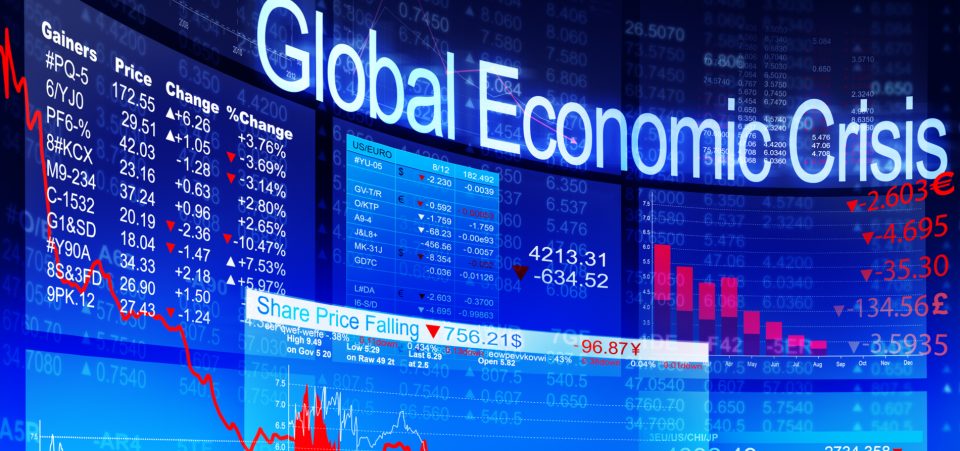The Collapse of the Morandi Bridge Could Reset the Eurozone and Trigger an Economic Crisis
Part of a highway bridge fell in Italy on August 14, killing almost 40 people. After the initial shock over the senseless deaths of innocents, I realized the bridge’s collapse foreshadows the next global economic crisis.
The impending economic crisis won’t spare the United States or the stocks that have pushed Wall Street to recent records.
Therefore, it’s time for investors and citizens to reconsider whatever assumptions they may have entertained about the markets and the economy.
A broken bridge on an Italian highway might just turn out to be a harbinger of big changes.
A Wake-Up Call for the Eurozone
The Morandi Bridge, in the port city of Genoa, was built in 1967 at a time when Italy—Europe, in fact—was experiencing tremendous growth and optimism thanks to significant government investment in infrastructure and business confidence.
The bridge was a small piece in a wide network of roads and highways that helped channel goods from Italy to the rest of the world. Now, its ruins will serve as a reminder that that is no longer what Europe is about.
Wrongly or rightly, the falling bridge has highlighted the fact that over the past decade, the Italian government—along with others in the eurozone—has neglected investments in things that benefit citizens, such as infrastructure.
Instead, the focus has been on the “spread.” In the eurozone, the term “spread” inevitably refers to the difference in yields between government bonds (like the Italian BTP) and the German bonds (“bunds”).
The higher the spread, the more Italians, for example, must pay in interests when they take out loans. The higher the interest, the more difficult it becomes to reduce debt levels. This then continues in a vicious spiral.
In the days before the single currency, the euro, European states adopted independent monetary policies, which gave them more flexibility in emerging from a financial crisis such as the one that started in 2008.
The euro has changed all that and made the spread the central theme of finance in the eurozone.
As It Happens, the Spread Has Become a Hot Topic Again
The economy in the eurozone has slowed down amid fears of President Donald Trump’s protectionism and the end of quantitative easing (QE) in 2019. If the issue of debt and borrowing costs is troublesome now, Europe is in for a nasty surprise in the fall of 2018 and winter of 2019.
In the Italian case, the new euro-skeptical government was already prepared to challenge the European Union, the European Central Bank, and the entire euro infrastructure before the Morandi bridge crashed.
The bridge will force the government to spend more, and sooner, to improve and add to the existing infrastructure, much of which was built in a happier and relatively more prosperous time 50 years ago.
The bridge’s collapse will make it all but impossible for the government to address the issue of aging infrastructure.
And this will bring it—and other governments—into collision with the EU, potentially triggering a major euro crisis.
Pulling out of the euro would cause all kinds of short- and long-term damage for those eurozone countries that attempt it, especially Italy (which would find it even harder to pay back its debts).
Yet, for Many, Remaining in the Euro Seems Even Worse
Therefore, only a radical shift in policy will save Europe from itself and the world from economic crisis.
In the past, states facing a recession could defend themselves by devaluing their currency.
The euro makes this impossible. Therefore, consumers in the more troubled EU countries fueled consumption and infrastructure needs through credit.
They borrowed their way to “prosperity.”
If America had the subprime mortgage to blame for its woes, the EU can blame it on the house of cards that the eurozone built.
In a sense, the euro has already fallen, given the endurance of the economic and financial crisis.
Germany, Europe’s powerhouse, has also resisted the temptation to invest in labor-intensive infrastructure. Rather, Berlin has encouraged wages to fall, offsetting the resulting decline in local demand with more exports, which became more competitive.
Indeed, if German workers were paid a little more, it would make President Trump more reluctant to impose heavier tariffs against German (and EU for that matter) cars and products.
If Germany’s Doesn’t Change, It Will Push the Eurozone into an Ever-Deeper Depression
Unemployment will explode as will debts, private and public. The economic crisis will be total, and it will have repercussions across the Atlantic. And that’s even before the end of QE and low interest rates.
It’s essential, therefore, that the EU approve a major plan to invest in public infrastructure.
This implies a complete overhaul of the eurozone rules. This is the only way that Europe can begin to stimulate domestic demand and become more competitive on the global stage, encouraging real growth.
Europe needs an effort to rebuild its infrastructure while encouraging investment in research and development into areas it has neglected. For example, EU firms have given up all major technology (in the sense of media, computers, etc.).
The EU Has Helped Feed the Big U.S.-Listed Tech Firms
And in the long term, should Europe change course—and recent events suggest, there’s no alternative—watch for shifts to the FANG stocks: Facebook, Inc. (NASDAQ:FB), Apple Inc. (NASDAQ:AAPL), Netflix, Inc. (NASDAQ:NFLX), and Google parent Alphabet Inc (NASDAQ:GOOGL).
Moreover, Trump’s protectionism will, by its very nature, further encourage the EU to adopt a new course, which could backfire for major U.S. stocks in the longer term.
The new European technology and infrastructure networks will serve as catalysts for a new European vision. And it can only be an improvement over the current one.
In the shorter term, the risk for the United States is that its dollar could become too expensive vis-à-vis the euro.
The solutions that Europe may adopt to avoid the risk of an economic crisis, should Trump continue to pursue protectionist trade policies, should make EU monetary policy more flexible against the dollar.
In other words, the EU will likely try to use fiscal stimuli to print more money. That’s exactly what the United States has done to pull out of crises.
In turn, rising concern over U.S. public debt will limit the Federal Reserve’s ability to act.
The U.S. Congress just approved an even larger military budget for fiscal 2019 than the prior year. In other words, the Treasury is stretched to the limit.
Debt Is Higher Than in 2008
Debt and deficit levels in the U.S. are higher than in 2008, when the financial crisis began.
The U.S. stock market has been performing like an athlete on steroids. Yes, the performance is remarkable. But, sooner or later, it’s exposed as “artificial.”
The fear of more expensive money has not hit Wall Street yet. But, soon, the fear of higher rates will arrive with fury.
Consider that emerging markets, like Turkey, have to pay more for their U.S. dollar debts. Add to that the many other countries whose economies would explode with higher Fed rates.
Nobody would be able to afford to pay the debts back because higher rates, which keep strengthening the dollar, will make repayments difficult, and eventually, impossible. The result would be a chronic default and economic crisis.
Perhaps it’s time to consider gold, silver, or the kind of stocks linked to veritable pillars of the United States, such as Defense.
The big drivers of the U.S. stock market, such as the tech sector and others, have been reinvesting their tax breaks into Treasuries, bonds, and especially stock buybacks.
The U.S. interest rate policy alone will eventually grind the merry-go-round to a halt. But the inevitable European reaction to the many wakeup calls about the current unsustainability of the eurozone will serve the final blow.






